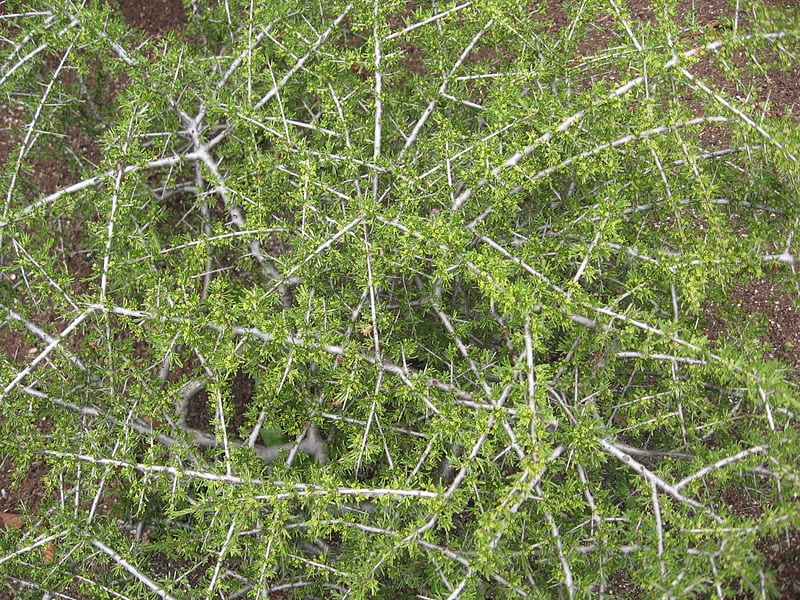
Image - Wikimedia / Cillas
The truth is that when you live in an area where drought is usually a problem, it is interesting (and recommended) to look for species that are capable of living well with little water. One of them is the Rhamnus lycioides, which grows as a low-growing shrub, and is therefore ideal for the edges of garden paths or even as a potted plant.
It does not have very showy flowers, but it keeps its leaves all year round and it is very very easy to take care of.
Origin and characteristics
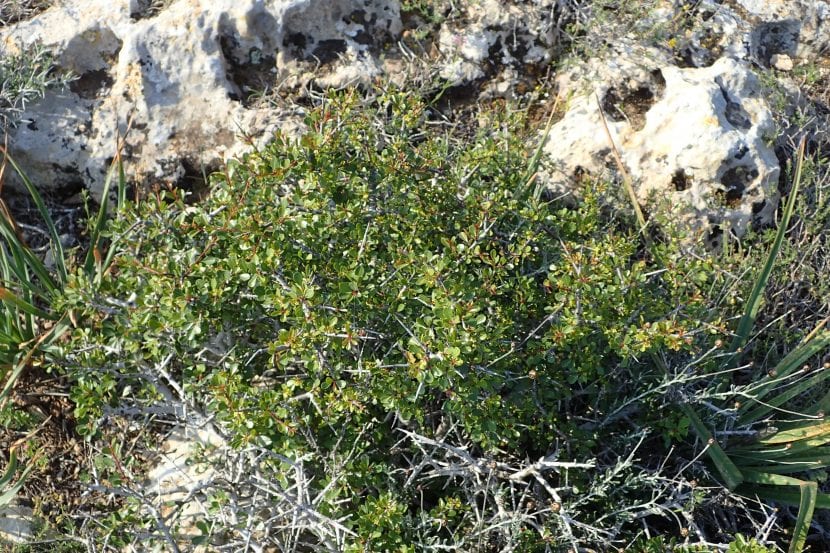
Image - Wikimedia / Krzysztof Ziarnek, Kenraiz
It is an evergreen shrub native to southwestern Europe, where it grows mainly in sclerophyllous forests, among pines, holm oaks and gall oaks. In Spain we can find it in the center, east and south of the Iberian Peninsula. Its scientific name is Rhamnus lycioidesAlthough it is popularly known as black hawthorn, artos, escaramujo, escambrón, tamujo, gargullero or rock hawthorn.
It is characterized by growing between 1-3 meters in height, highly branched so much that its branches form a tangle. The leaves are green, elongated, leathery and usually broaden a little towards the apex. The flowers are very small, yellowish-green, and appear in the axils of the leaves. The fruit is globose, first green and finally, when ripe, black.
What are their cares?
Do you want to have a specimen of black hawthorn? If so, we recommend that you provide the following care:
Location
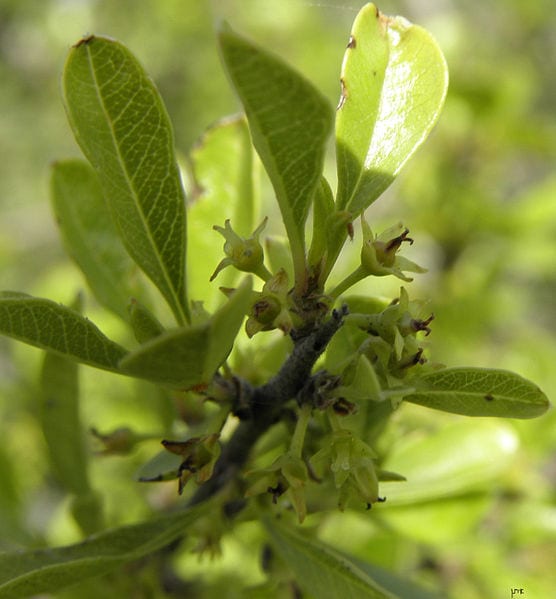
Image - Wikimedia / Eitan f
Must be outsideEither in full sun or with partial shade. Being small, and as it does not have invasive roots, it can be had almost in any area.
Earth
- Flower pot- No need to mess with mixes of substrates. Buying the universal that they sell in any nursery, and for here, it will be enough for it to grow well.
- Garden: it is adaptable, but prefers clayey ones, with good drainage (in this article you have information about it).
Irrigation
It is very important to control irrigation of the Rhamnus lycioides. As we said above, it lives in areas where drought is a problem, since it coincides with summer. In fact, for this reason it has evolved to have leathery leaves and thorns, since it is a way to avoid losing too much water and, also, that possible predators eat it.
Taking this into account, you have to water from time to time trying to avoid waterlogging, since the excess of water would rot its roots. So whether you don't have much experience with plant care or simply want to be over-safe, I advise you to check the humidity of the soil before watering, for example with the help of a thin wooden stick or with a meter. digital humidity.
With that, little by little you will know how often you should give your plant water 🙂. But to give you an idea, more or less it will be necessary to do it about 2 times a week in the middle of the summer season, and once every 5-8 days the rest of the year. Of course, if you are going to have it in the garden, from the second season you will be able to space the waterings more and more until there comes a time when you can suspend them (only if a minimum of 350mm per year falls in your area).
Subscriber
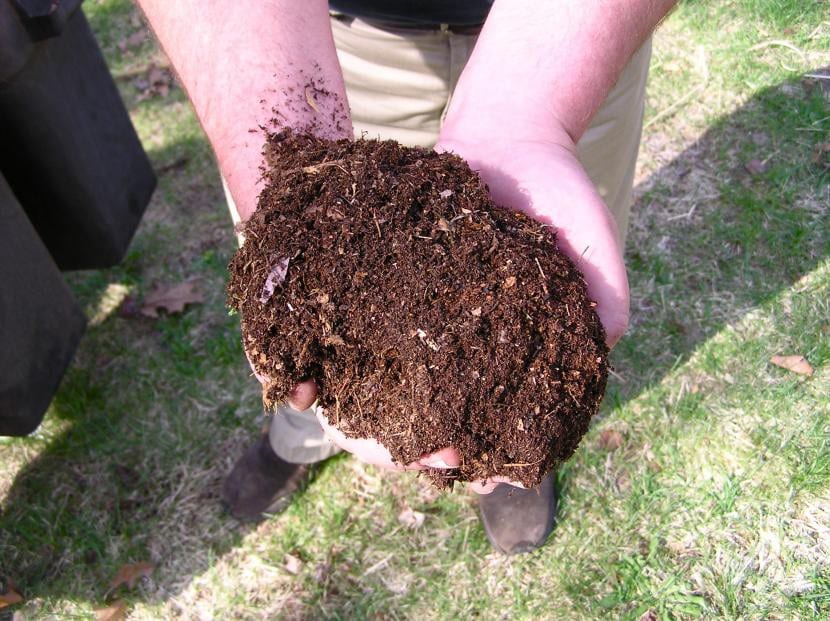
It is advisable to pay during the warm months, that is, from spring to early fall, with natural products. It may be guano (get it here liquid and by here powdered), earthworm humus: manure, but also things that we have at home: egg and banana peels, compost, ... or others that we tell you in this link. You have to take it every 15 or 20 days or so.
Multiplication
Black hawthorn multiplies by seed in spring, following this step by step:
- The first thing to do is fill a seedling tray (like this) with universal growing substrate.
- Then, it is watered conscientiously, and a maximum of two seeds are placed in each alveolus.
- Afterwards, sprinkle with copper or sulfur to prevent the appearance of fungus.
- Finally, the seeds are covered with a thin layer of substrate, and the seedbed is placed outside, in semi-shade.
Thus, they will germinate in about 2 or 3 weeks.
Pruning
Having a branching plant in the garden is not always ideal, so if you see that it is necessary, you can prune your Rhamnus lycoides at the end of winter. Cut off the dry, diseased, weak or broken branches, and you can also remove those from the trunk if you want it to acquire the shape of a tree.
Planting or transplanting time
In spring, when the risk of frost has passed. If it is in a pot, touch transplant every 2 years.
Rusticity
It resists without problems the frosts of up to -7ºC. If you live in a colder area, protect it with a anti-frost fabric what can you buy here.
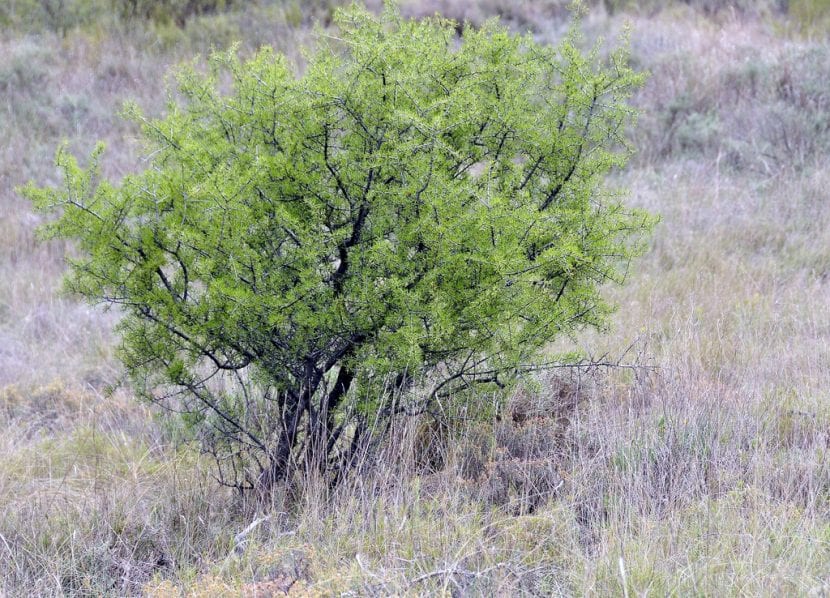
Image - Flickr / José María Escolano
What did you think of this bush? Have you heard of him?